A guide to car performance upgrades
Despite the kind car you drive, you will always want better performance from it – quicker acceleration, more horsepower, flatter cornering, or better braking. When it comes to performance, you may find that the factory definition may not meet your expectations. Not to worry you can get the car performance you desire with aftermarket performance enhancing parts. These are added to your car to make it faster, corner harder, stop quicker and more powerful than before.
What are Performance Parts?
A list of car performance upgrades
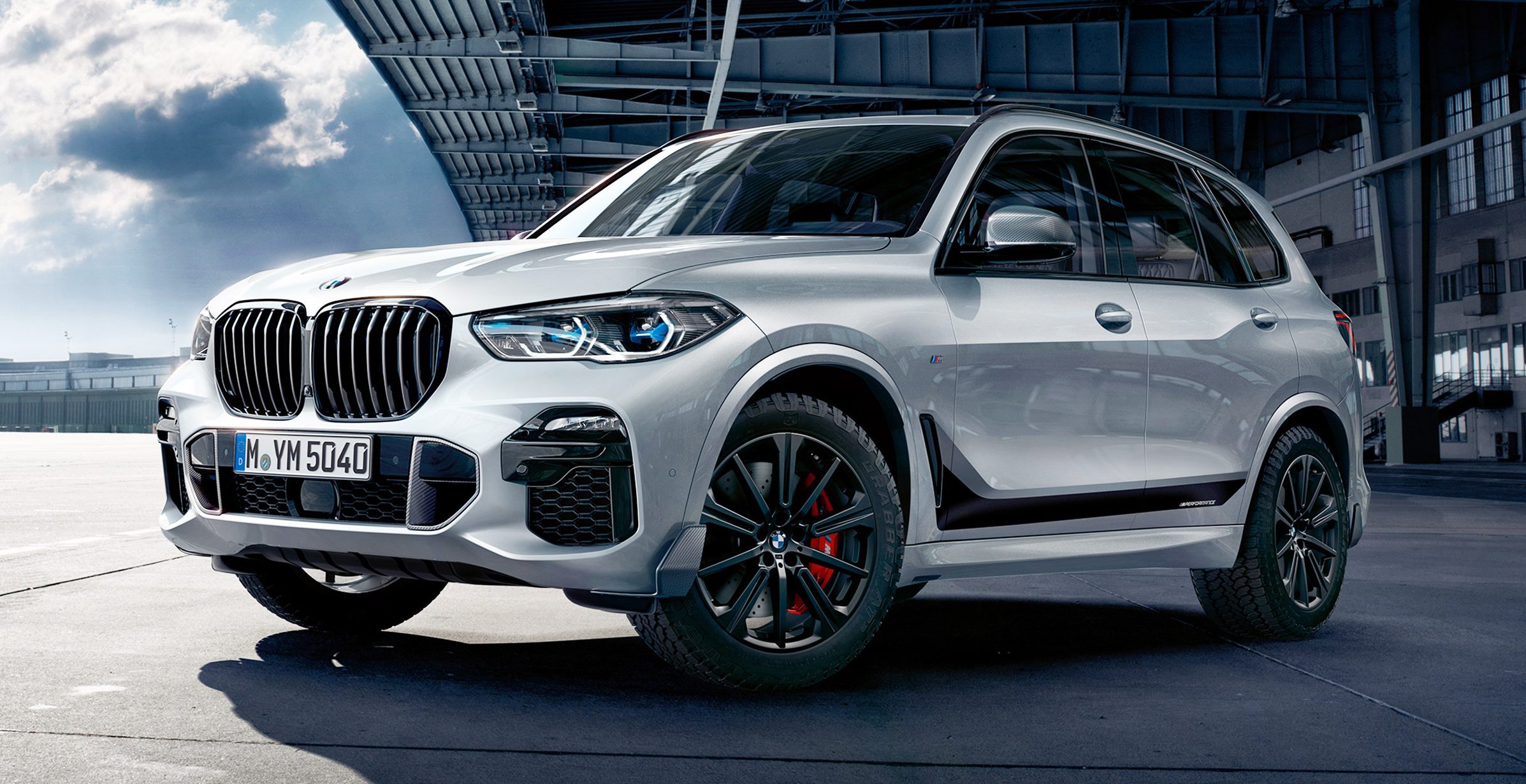
Photo on autoexpress.co.uk
Car lovers often change the stock parts on their cars with aftermarket alternatives mainly to improve the vehicle’s performance, but what does that mean? Car performance refers mainly to speed, how fast the car can go. Altering a car to improve its performance is known as tuning a car. The car modifications can be to the interior or exterior of the vehicle. When most people think of car performance, power/ horsepower is the first thing that comes to mind. This, however, is not the only feature that affects the performance of the car. The engine may have a lot of horsepower, but without the right suspension or enough torque, this power does not translate to more speed.Here are a few terms you should know :
- Vehicle’s performance: this is the overall capability of the car as a whole. For example, a car with a high power engine and bad tires may still perform poorly.
- Horsepower: this is what many people relate performance too. It is the measure of the engine’s ability to create power at high speeds, in other words, the power output of the car’s engine. With more power, a car can accelerate faster from a standstill.
- Torque: it is the force required to move your car, the pulling power of the engine. The car’s ability to move from a standstill depends on how much torque it has. Once you are moving, it is essential to have enough torque and more horsepower to be able to maintain high speeds.
- Speed: it is the rate at which a car moves, or it can operate at.
- Acceleration: this refers to how fast your car speed rises from zero to 100 kilometers/hour from a standstill position.
Some cars are designed and made that perform better than standard cars, these are known as performance cars. They can be used in racing but not all race cars are performance cars, many are modified stock cars. They are not to be confused with sports cars. Sports cars are often small, two-seater cars made for speed and agile handling. The sports car may be simple or luxurious but high maneuverability and being lightweight is requisite. They are aerodynamically shaped, the steering and suspension are made for precise control at high speeds with a low center of gravity than other cars. They are not used in racing.
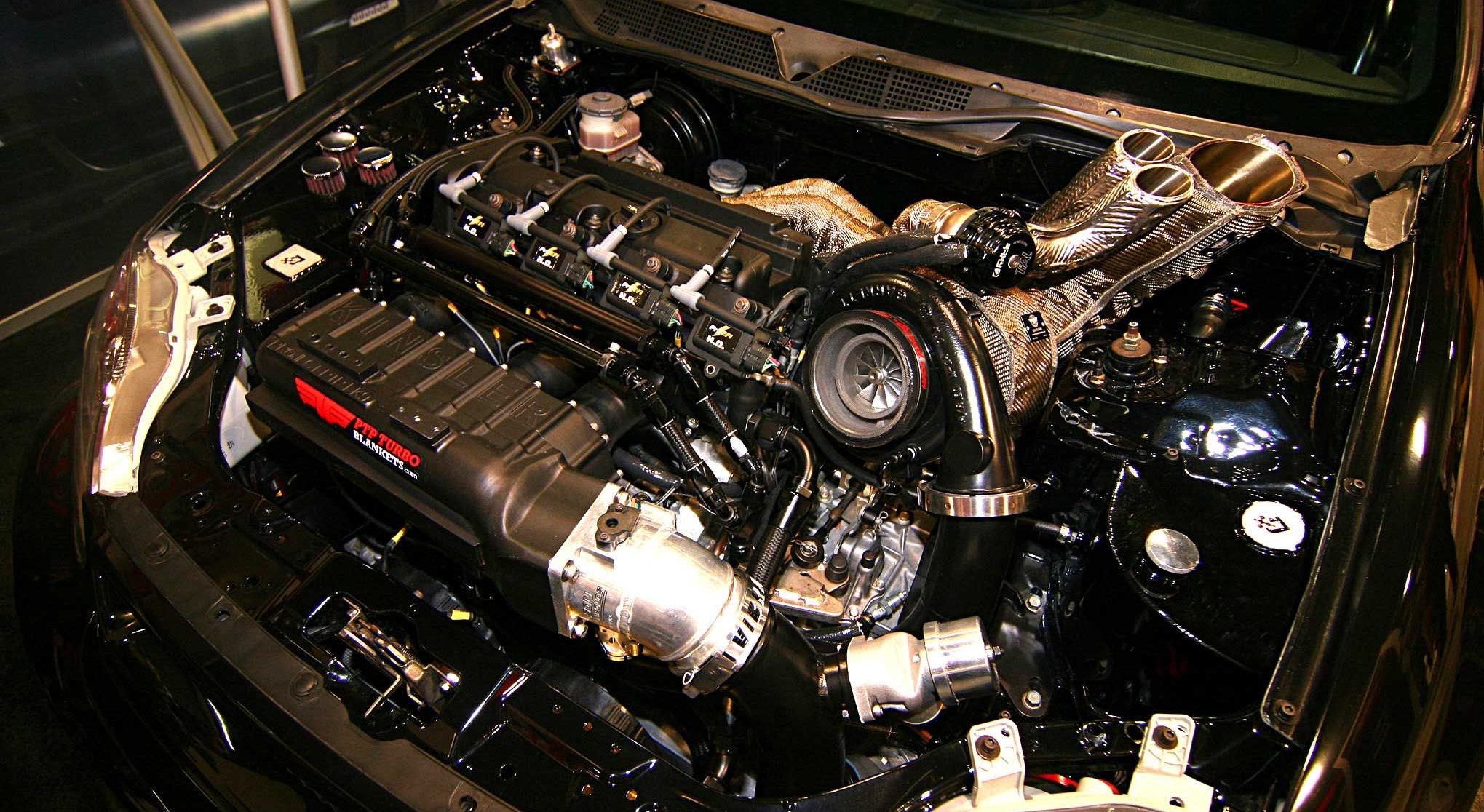
Photo on superstreetonline.com
How to improve your car performance
Below is a list of performance upgrades you can make. It is important to understand that every car make and model is different and they have different upgrades to improve their performance. These are general parts you can add to or replace in most cars, and they will improve its performance.
Spark plugs
A spark plug provides the spark needed to ignite the air-fuel mixture in the engine. If the plug fails or misfires, the air-fuel mixture will not combust, and the car will not have the power it needs to move. A well-timed spark in each of the engine’s cylinders results in easier starting and better fuel mileage, which is essential for horsepower. No matter how much air-fuel mixture you let into the cylinders, without proper combustion, it will be wasted. High-performance plugs produce powerful, longer lasting sparks that result in complete combustion that maximum horsepower. The spark plugs available for your car depend on the ignition system. Coil-on-plug ignitions can have high voltage coils that will provide long-lasting, high-energy sparks even at high speeds, with complex controllers that allow you to adjust the timing. For a simple performance boost, upgrade your spark plugs to performance grade ones which spark longer allowing for more combustion and are exceptionally durable. You can check the car manual as to how often you can replace your spark plugs. The wires used should be able to withstand the heat that high-performance engines produce. The wires should have low resistance for a longer, hotter spark. You can also consider adding a performance ignition box with a capacitor discharge ignition system. They provide multiple sparks at low speeds for complete combustion, and by discharging a capacitor through a coil at high speeds so it can fire sparks much faster than when the coil would have to charge and fire normally.You can upgrade or replaced the stock distributor with a performance cap and rotor. There are aftermarket distributors with alkyd compound caps with brass inserts that are tougher, resistant to corrosion and have better conductivity. An electronic ignition conversion kit can give more precise and consistent timing and exclude the need for breaker point replacement.
Air intake
Engines need air and fuel to perform well, so upgrading the air filter and intake system will definitely boost your speed. An air intake system allows your engine to breathe, that is take in air. Stock intake systems are not designed only for performance; they also prioritize cost and noise reduction. Thus many stock vehicles come with restrictive air boxes, intake tubes, and cheap paper air filters.Most aftermarket intake systems are cold air intakes. The cold air is said to be more dense, that having a higher concentration of oxygen per volume than warmer air. Performance is improved by removing the restriction from the engine heads, intake manifolds, throttle body, and intake piping. The air filters are made of many layers of cotton gauze which trap debris but lets air through. This means that they can be cleaned and reused which saves you money. Clean the pipe of debris to allow for better airflow. Remove the tumble generator valves where applicable to allow more air into the engine too.
Forced air induction systems
These are other ways in which air is taken into the car engine. The engine can either be naturally aspirated or take in the air with the aid of these systems. Some sports cars or factory performance cars come already equipped with these components, but they can be added aftermarket. They allow more air, oxygen, into the engine to completely combust the fuel. They can, however, be quite costly. The two types of forced air systems are:Turbochargers: these are installed in gasoline engines and are powered by the exhaust flow which spins a turbine to push clean, compressed air into the engine. By compressing the air, more of it can be squeezed into the cylinder which also means more fuel too. This facilitates a more powerful combustion process which increases the power output of the engine. Turbocharger kits for gas and diesel-fueled vehicles include the turbo, wastegate, pipes, air intake, injectors, and the needed hoses, fittings and hardware.Superchargers: these also compress air and force it into the engine, but while a turbocharger uses the exhaust to operate, a supercharger is powered mechanically by a belt, chain or gears connected to the crankshaft. This modification requires advanced engine reconstruction and hood modifications to accommodate its size. Supercharger kits include the supercharger, intake manifold, fuel injectors, intercooler, pulleys, belts, chains, and all other necessary components.These forced induction systems may provide a big boost in power but installing them can be a pricey affair and illegal in some areas. Make sure to get the right turbocharger or supercharger kits with all the necessary components included.
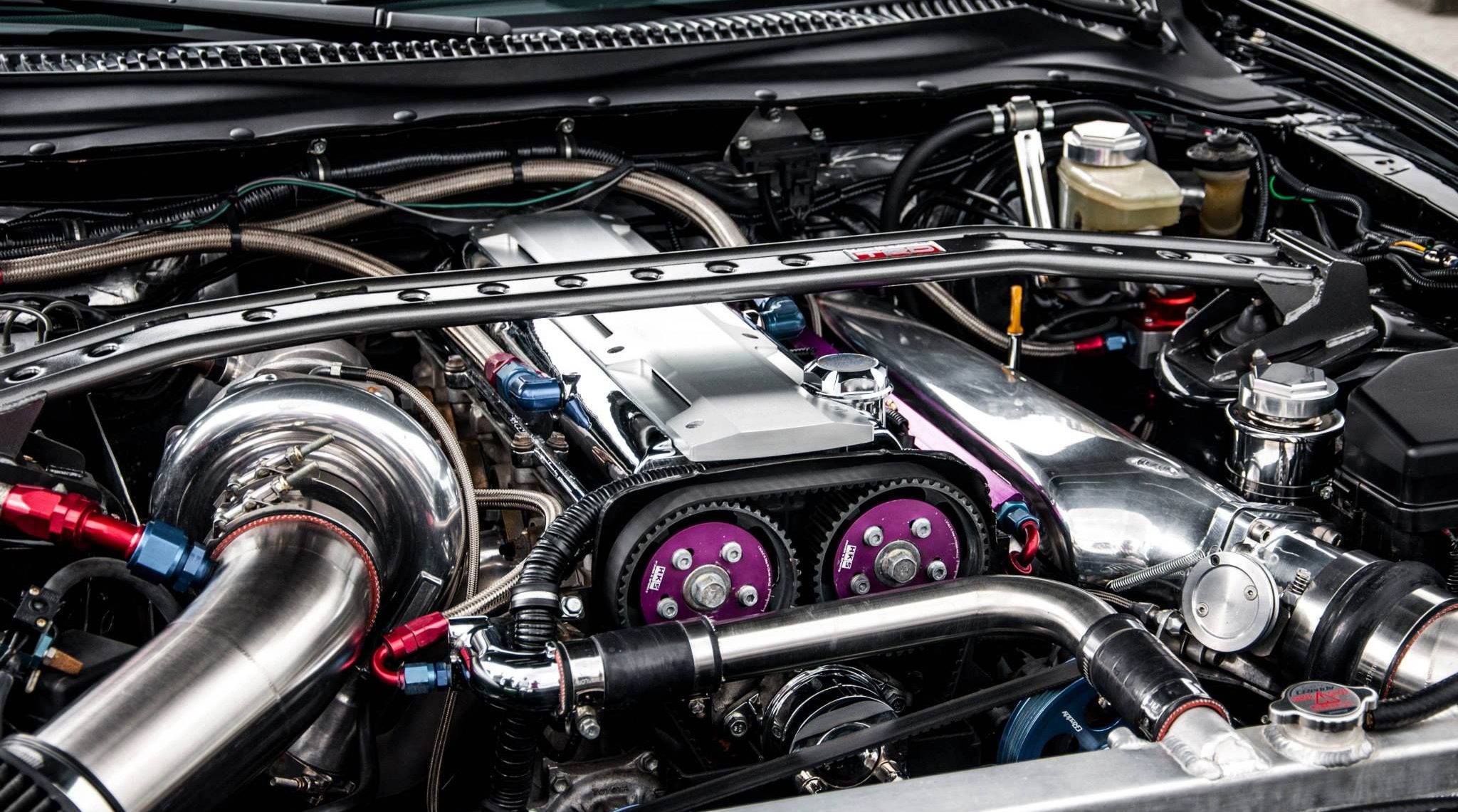
Photo on autocaremontreal.com
Performance chips
Stock cars come equipped with chips that control the fuel injection systems. They restrict the amount of air and fuel a car can use, that reducing its power and speed. There are performance chips that can be added to the car’s electronic control unit to upgrade or replace the stock ones. They do not have the restrictions stock chips have, so they will greatly improve horsepower, speed, and fuel efficiency. With a programmer, you can take advantage of the benefits of cold air intakes, exhaust systems and the other performance parts you have added with custom settings specifically created for your car in regards to the modifications you have made.
Carburetor
These are becoming obsolete with the new technology used to make car engines nowadays. However, if you still own a car with one, you can upgrade it to boost performance. A carburetor is a gadget that mixes air and gasoline into vapor to be combusted in the engine. Fuel injectors are replacing it. You can upgrade this device by changing the barrels where applicable. If you have a two-barrel carburetor change it to a four-barrel one. You may have to put in a new intake manifold which will boost the speed of the car.
Exhaust
While a custom exhaust will make your car faster, it will also increase the noise your car makes. Upgrading the exhaust reduces the restriction on the engine, easing the flow of exhaust thus improving the overall performance. You can replace the catalytic converter with a dual exhaust system with one that starts from the engine, not the one that splits the tailpipe facilitating the flow of exhaust from the engine. Removing mufflers, adding bigger headers. Keeping the inner pipe walls smooth and matching the header ports can increase exhaust flow. Upgrading from exhaust manifolds to headers improves the weakest link in the exhaust system. Header wrapping the exhaust by about halfway will enable the hot air trying to escape to suck out the exhaust. They are made of stainless steel or aluminized steel for lasting durability. Be sure to check with local regulation on the sound ordinances before upgrading your exhaust.
Nitrous oxide
It creates more oxygen for combustion in the engine. It also cools the intake air making it denser. Unlike other modifications, nitrous oxide is not run continuously but only applied in short bursts when needed. Depending on your budget and your speed needs, there are several systems that can inject nitrous oxide into the cylinders from single or multiple spots, boosting your car’s operation. Many areas ban the use of nitrous oxide in street-use cars. Too much nitrous can blow the engine apart and cause a serious accident. So be careful with how much nitrous you inject into the engine.
Reduce the weight of your car
The less the car weighs the torque it has enabling it to go faster. An easy way to reduce the car’s weight is to replace some of the car body parts like the hood or trunk with carbon fiber ones. You can opt not to carry a spare wheel or change your car seats to lighter ones. Be careful not to reduce the weight too much that it affects the handling of the car.
Increase the fuel capacity
While you make modifications to increase the air coming into the engine, you should not forget about the fuel. A proportionate mixture of the two is necessary for combustion resulting in optimal performance. You can increase the amount of fuel injected into each cylinder by upgrading the fuel system. Installing high flow pumps, large diameter fuel lines to get the right volume of fuel to the engine, high flow fuel filters to sieve any contaminants from the fuel faster and flow rate injectors which have balanced flow rates and optimal spray patterns for fuel atomization. The injectors make tuning easier for better drivability and power. Larger bore throttle bodies help maintain the air flow to the manifold. Aftermarket fuel pressure regulators can be set to flow at maximum fuel capacity. Higher capacity fuel tanks or just adding an extra one can increase your car’s fuel capacity.
Drivetrain
A drivetrain consists of the transmission, driveshaft, universal joint, constant velocity joints, differentials, the axles, and the wheels. It works with the engine to move the car, by conveying the car’s power through the transmission to the drive wheels, while controlling the torque applied. Here are some of the parts included; clutch kits, flywheels, torque converters, flexplates, transmissions, and their components, shifters and shift knobs. Upgrading any or all of these parts can increase the car’s torque thus its speed, significantly. These upgrades, however, are vehicle specific and should be done by a professional.
Suspension
Improving the suspension components can increase the speed and handling of the car. Reducing the chassis flex can aid in adding a car’s handling and response by adding sway bars and tower braces. You can add subframe components, and other strengthening devices to protect the chassis. The options available here are a lot.
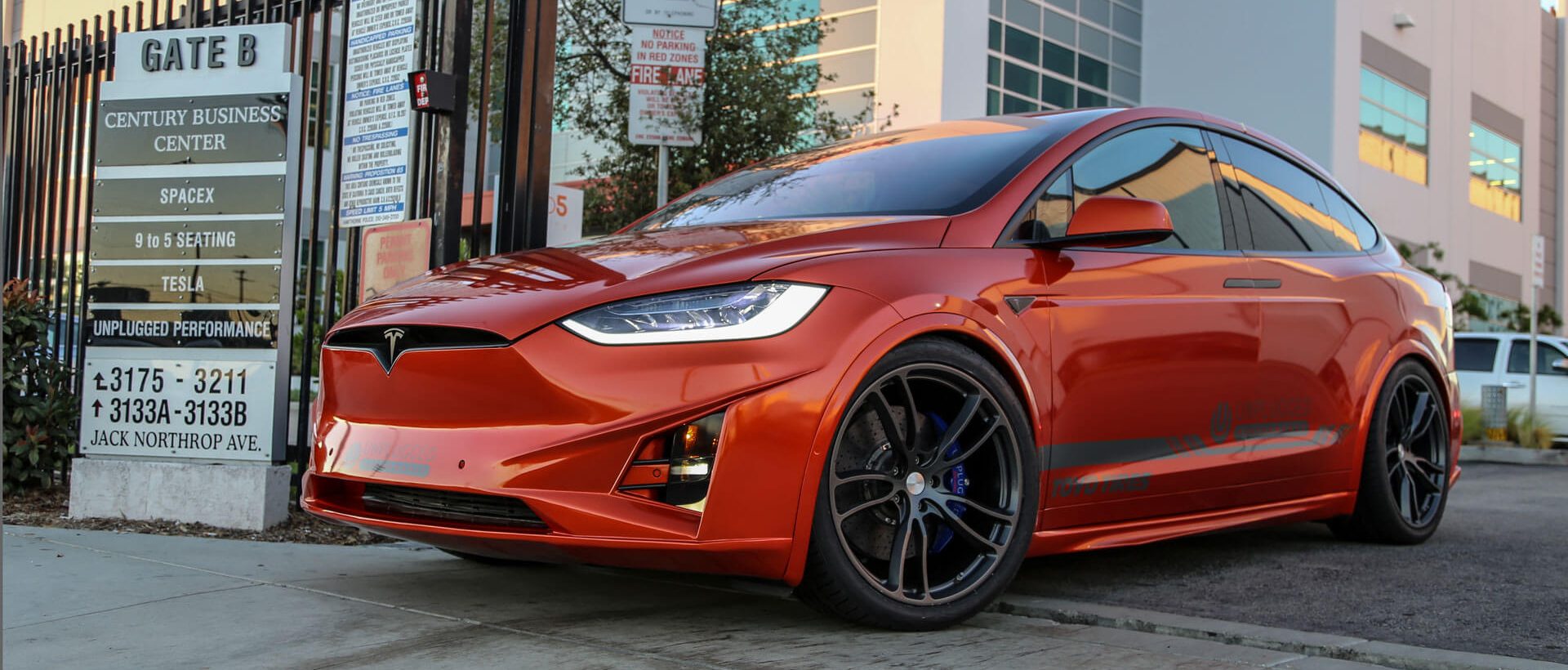
Photo on unpluggedperformance.com
Tires
A decent pair of tires that have been properly inflated can make a huge difference in how fast you can go. They provide better handling, especially around corners and turns. More grip increases the traction so check the treads and keep the tires in good shape.
Rims
Not only do they add to the car’s cool demeanor, but lightweight rims can also reduce the car’s weight improving handling and how the brakes perform.
Brakes
While upgrading the car parts to perform better do not forget to factor in the brakes. Better brakes allow you to stop faster, reducing braking distances, more efficiently and keep your control on the car. Since the vehicle is traveling at higher speeds accidents can happen, here good brakes are vital.
Engine control unit (ECU) tuning and reflashing the system
It is vital that as you modify the car not to forget to upgrade the control unit and remove the factory restrictions to improve the performance by adequately utilizing the mods added. Reflashing changes the programming of the unit in regards to timing, air-fuel mixture and other factors that increase the horsepower. It is ideal for turbo or supercharged cars. Naturally aspirated cars may see little to no change. This upgrade should be done by a professional to avoid damaging the car.
Body kits
Body kits not only change how the car looks but also how the air flows around the car. We know that air is vital for performance. Body kits improve or add the aerodynamic features of a vehicle. They have components that can direct air into the car better, redirect airflow to reduce drag and increase downforce, thus improving handling. Some of these parts include side skirts, fenders, bumpers, spoilers, hoods, scoops, etc.
Replace some mechanical parts
Mechanical parts like the cooling fans or fuel pumps can be upgraded or replaced with electric parts to prevent using up a lot of the horsepower generated leaving it all to improving your acceleration and speed. With all these upgrades make sure your driving capability matches to get the most from your modified car.
Key factors to consider when picking car performance parts

Photo on bmw-m.com
- The law – Pay particular attention to the regulations in your area concerning car performance modification. Some upgrades, like adding nitrogen oxide, are not allowed in street cars. It is crucial that you respect the speed limits set by law and the other road users. Just because your car can go faster, it does not mean you should be flooring the car every chance you get. Safety is paramount.
- The budget – How much money you have to spend on performance part will determine the kinds of modifications you can make. It can be as cheap as changing the spark plugs to adding a full body kit or a complete engine tune-up.
- The make and model of your car – The type of car you have, what year it was made and what model it is are all vital factors to choosing what modifications you can make to the car.
- The modifications you want to install – Performance modifications and upgrades vary depending on the car’s make, year and model. Talk to a professional before you make any changes so as not to damage your vehicle
- The warranty – This can refer to the car’s warranty or that of the parts you are adding. Consider if the parts you want to install in your car will void your warranty, or if the pieces themselves have a warranty in case of damage.
- The quality of the parts – Go for good quality and durable parts that are made from good materials that will withstand the strain of higher performance.
- The maker or retailer of the parts you want to buy – Vet the company you want to purchase the parts from. Due to the high demand for performance-enhancing parts, many fake retailers have emerged. A trusted and experienced dealer can answer any questions you have about these parts. It is vital to know if they are licensed to sell these parts to avoid fake, low-quality unsafe products. In case of a problem in the future, it is easier to deal with a legalized dealer than an unscrupulous one.
- The models available in the market – With the variety of parts available make sure the components you get are compatible with your car. Just like cars, these modifications have model types too. You may already have a performance part installed like a spark plug. You can upgrade to a better spark plug model that works even better.
Cheap ways to increase horsepower
Ways to improve your car’s power output
- Use a cold air intake
- Replace or upgrade the spark plugs
- Replace the paper air filter in the intake system with a cotton one
- Reduce the weight of the car. You can use lightweight parts or remove unnecessary things in the car.
- Install a performance chipset to remove the restrictions on the stock parts you have to improve performance. You could reflash the current ECU and program it for improved performance
- Install a cat-back exhaust system after the catalytic converter. A combination of a high-flow cat converter and exhaust will increase the airflow and torque to up the horsepower. It pushes the exhaust gases out faster making more room for the air-fuel mixture in the engine cylinder.
- Change your tires and align them properly. Swap out the regular tires with shorter ones for better acceleration. While carbon-fiber wheels may reduce the weight of your car, they are quite pricey.
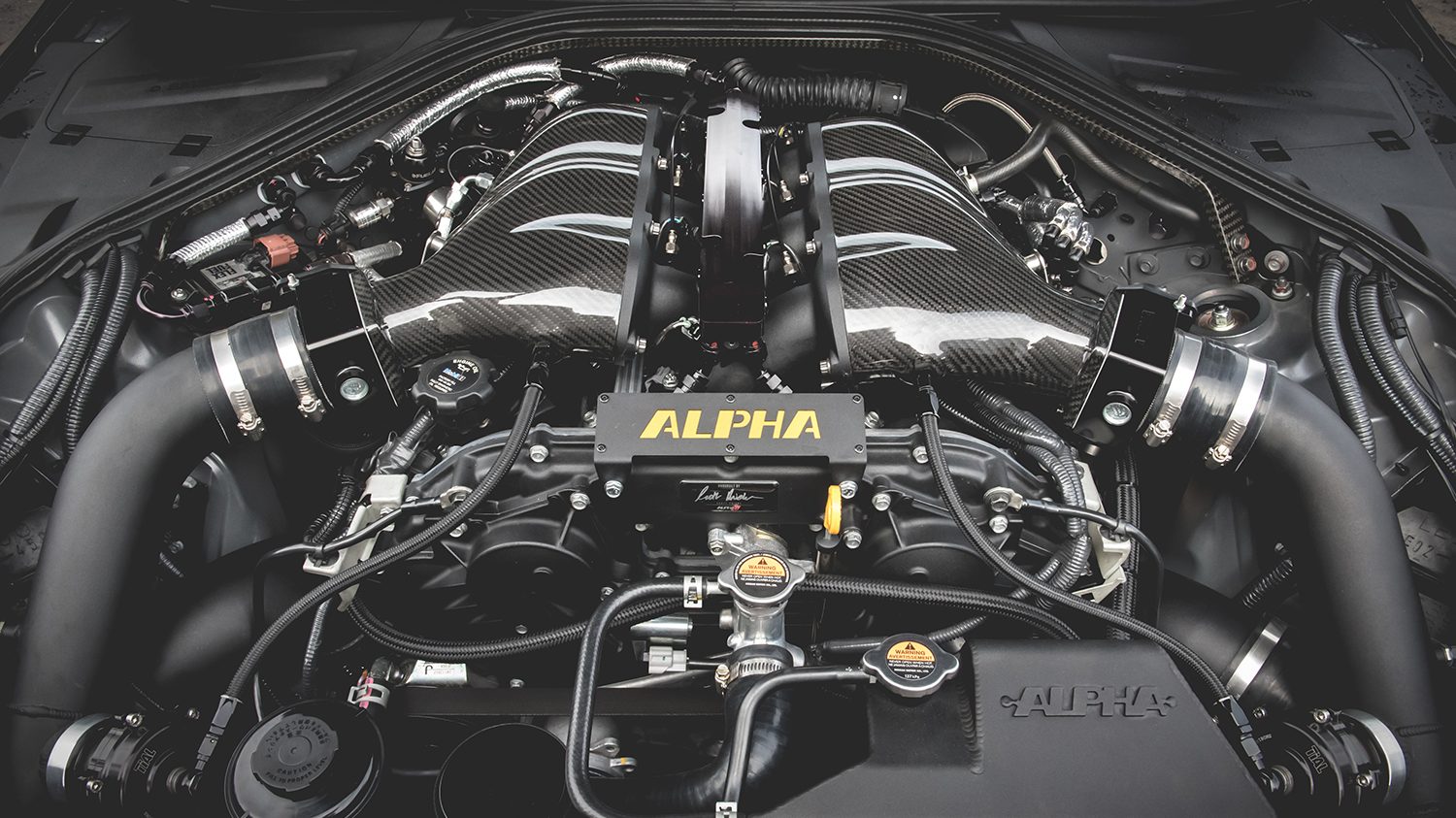
Photo on amsperformance.com
How to upgrade your car engine?
Tips on engine tuning
This focuses on improving the power output, fuel efficiency torque and responsiveness of the engine. When it comes to the engine, most people are only concerned with increasing the power output. Here are some ways to increase the power output:
- Expand the engine’s displacement by either boring; which is increasing the diameter of the cylinders and pistons, or by stroking; which is using a crankshaft with a greater throw.
- Adding more or bigger carburetors in the engine.
- Install a more efficient fuel injection system.
- You can add the size of the poppet valves to reduce the restriction of the fuel-air mixture entering the cylinders. Using multiple valves give the same result.
- Use larger bored, smoother inlet and exhaust manifolds which helps maintain the velocity of the gases coming in and exiting.
- Optimize the valve timing for better fuel combustion.
- Add a turbo or supercharger to increase the airflow into the engine.
- Use fuel with a higher energy content or add additives like nitrous oxide
- Reduce friction losses by machining the moving parts to their lowest tolerances, lubricate them or replace them.
- Reduce the rotational mass, which is made up of the crankshaft, connecting rods, pistons, and flywheel. These parts can be made of lightweight, durable materials to eliminate rotational inertia.
- Keep the engine cool with cooling liquids and additional fans. You can install a heat guard on the exhaust manifold to prevent it from radiating heat into the engine.
- Perform a chip tuning by either reflashing or replacing the OEM chipset with an aftermarket one.
The choice of modifications to make is dependent on the performance enhancement desired your budget, and the engine specs you want to improve or change. There are advantages and disadvantages to making these modifications so now that you know more on these parts you can make the right decision.